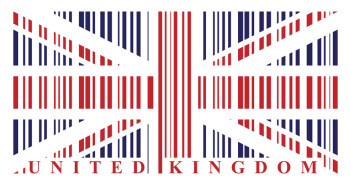GBP/USD continued its recovery following the sudden political certainty in the UK. But after a 450 rally, what’s next? Here are 3 opinions:
Here is their view, courtesy of eFXnews:
Sterling has marched steadily higher in recent sessions, as the market’s worst fears about the UK voting to leave the European Union have faded.
Nevertheless, market players remained wary of the fast-paced gains seen in the past few days.
Even as cable neared $1.3300 earlier Tuesday, a 3.9% rise from last week’s trough a bit under $1.2800, players leaned more toward selling sterling rallies than buying sterling dips.
Cable was trading around $1.3271 in afternoon action, on the high side of a $1.2973 to $1.3295 range.
Earlier Tuesday, the pair vaulted key resistance at $1.3229, the low posted June 24 as the market was reacting to the Brexit vote, as well as the $1.3291 high from July 5.
Aside from the next big figure at $1.3300, the next levels of resistance will be the July 4 highs near $1.3341 and the July 1 highs near $1.3350.
Given how far cable has come off the $1.5018 high posted June 24, when early polls were favoring a Remain vote, additional retracement higher will be needed before the “all clear” is sounded.
The first important Fibonacci retracement level, the 38.2% retracement of the $1.5018 to $1.2798 decline, comes in at $1.3646, still several big figures away. The 50% retracement stands at $1.3908, viewed as light years away.
The move above “the key $1.3206/40 zone” in sterling implied “a better near-term tone,” said Niall O’Connor, technical analyst at JP Morgan.
“Still, a break above the $1.3500 area would be necessary to confirm a deeper short-term corrective phase,” O’Connor said.
CFTC data, released last Friday, showed that speculative accounts had a net sterling short of -49,031 contracts as per July 5 versus -42,711 contracts the prior week and -66,299 contracts, an extended short, seen the week ending June 7.
Cable closed at $1.3022 July 5, so net sterling shorts likely have been trimmed subsequently.
Bank of America Merrill Lynch strategists looked for the BOE to cut the bank rate by 40 basis points to 0.10% this week, but saw “a good change of only 25 bps,” which is the consensus view for those looking for a July cut.
“They have nothing to gain by waiting; better to get ahead of the issue,” they said.
BOA Merrill looked for the BOE to “do all its conventional policy in one go,” and to unveil additional unconventional policy in August, i.e. additional Gbp50 billion in quantitative easing, “potentially including private sector assets and a reboot of the FLS.”
As for sterling, “a rate cut should come as no surprise, but even a more conservative 25bp rate cut will not likely provide any relief for the pound and we would use any bounce as an opportunity to sell into,” the strategists said.
CitiFX G-10 strategist Josh O’Byrne’s baseline view was that the BOE will cut by 25 basis points Thursday and offer liquidity and credit support in August.
Citi put a 75% probability at this outcome, which should cause a 0.8% decline in sterling.
A 50 basis point cut, with new gilt purchases and “Treasury indemnity for credit risk on FLS,” which Citi puts at only a 5% probability, would likely mean a 2.0% sterling slide.
CitiFX put 20% odds on the BOE keeping rates unchanged in July and offering instead a “strong signal” about easing in August. Cable would likely rally about 0.5% on such news.
“Even a comparably hawkish BOE response is unlikely to shake bearishness predicated on the absence of willing funders for large and potentially growing current account and fiscal deficits,” O’Byrne said.
If the BOE follows Citi’s baseline, “we see it encouraging GBP lower and aiding a domestic rebalancing,” he said.
“The BOE is hawkish if they turn bearish on the supply side and the efficacy of monetary policy; even this, doesn’t seem sustainably GBP positive to us given the structural imbalances and probably cyclical weakness,” O’Byrne added.
Sterling has benefited in the post-Brexit environment from renewed global investor interest in UK equities.
Last month’s BOA Merrill Lynch’s monthly fund managers survey showed that a net 23% of those polled, from June 3 to June 9, were underweight UK stocks versus a net 36% underweight in May.
On June 24, the FTSE 100 saw an 8.7% slide, from a high of 6,338.55 to a low of 5,788.74, back at mid February levels.
At Tuesday’s close of 6,680.69, the index was up 7.0% year-to-date and up 15.4% from the June 24 low. The earlier FTSE 100 peak of 6,703.09 was the highest level since August 11, 2015, when the index peaked at 6,736.22.
For lots more FX trades from major banks, sign up to eFXplus
By signing up to eFXplus via the link above, you are directly supporting Forex Crunch.
